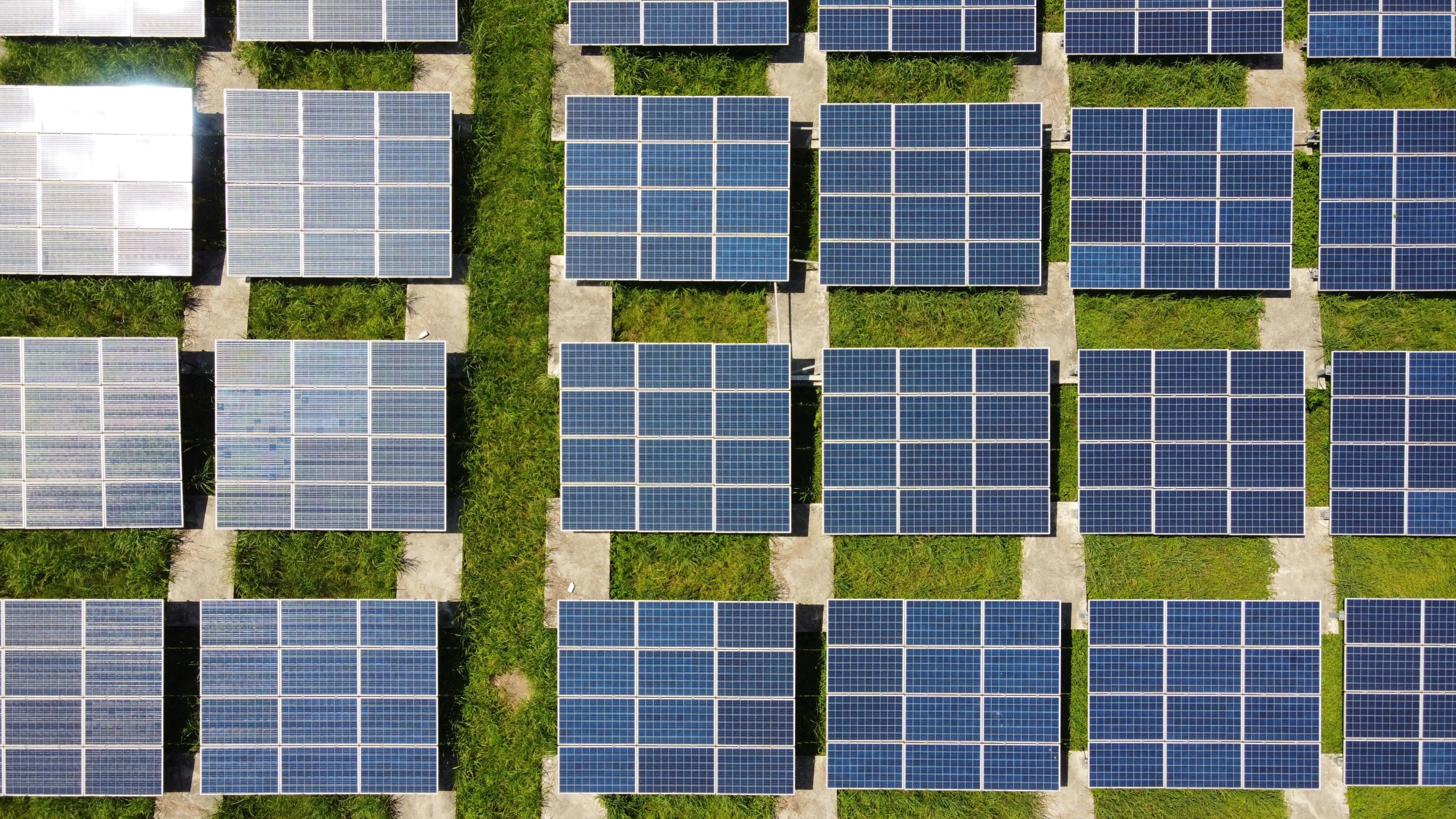Solar energy is a hot topic right now. As energy prices soar, many people are turning to solar power and reportedly saving hundreds of pounds on their electricity bills.
According to Solar Energy UK, solar is now the most affordable renewable energy in the UK as of September 2022. It's also the most popular, supported by 90% of the UK public.
What is solar energy?

Solar energy is electromagnetic radiation from the Sun – or, in other words, sunlight and heat. The Sun is the biggest source of energy we have. By harnessing its power, we can generate renewable energy without relying on fossil fuels. This is good news for the planet, as well as our bank accounts.
Solar energy is captured with solar panels. These devices usually use what's known as a ‘photovoltaic' system to change sunlight into electricity. This renewable energy can either run the appliances in your home or store energy in a battery for later. Any excess electricity is directed back to the grid.
This reduces the amount of electricity you need from the network. Result? Lower energy bills and low carbon.
Solar panel facts
Not surprisingly, sales of solar panels are on the increase, with around 3000 solar installations being carried out every week in the UK. This is up from 1000 a week in 2020.
Solar panel prices have fallen by over 60% in the last decade. There is, of course, an upfront investment, but rising energy prices are now reducing the amount of time it takes to recoup the cost.
The biggest gain comes from using the energy you generate – householders could save up to £729 per year. Any solar electricity generated during the day can be stored for use at night, using batteries and other energy storage technologies, so nothing is wasted.
And if you create more energy than you need, you get paid for it.
Solar panels are also fast becoming more efficient, with developments in design meaning that more light can be captured in different ways. For example, tracking systems allow solar panels to follow the Sun from east to west during the day. And transparent solar technology looks set to generate electricity from windows in offices, homes, cars or even smartphones.
With professional maintenance, a solar system should last for more than 30 years. And once a solar panel reaches the end of its working life, 99% of it can be recycled.
Why should we switch to renewable energy?
We've been using fossil fuels for thousands of years, but it wasn't until the Industrial Revolution in the mid-18th century that coal, oil and gas became our main energy sources. We now know that fossil fuels are the biggest contributors to climate change, responsible for over 75 per cent of global greenhouse gas emissions and nearly 90% of all carbon dioxide emissions.
In contrast, renewable energy (also known as ‘alternative energy' or 'renewables') provides ‘clean energy'. This means it doesn't release any carbon dioxide. Renewable energy sources include solar energy from the Sun, geothermal energy from the Earth and wind energy.
By choosing renewable energy, we're reducing our carbon footprint, decreasing pollution and supporting the expansion of jobs in the green energy industry.
Sunlight provides an infinite renewable energy source to support our transition to net zero. If that isn't enough to convince you to consider solar power, these 15 facts about solar power energy might help you warm to the idea.
- The Sun is going to last about five billion years, which means we don't need to worry about solar energy running out anytime soon.
- If we could collect and store one minute's worth of the Sun's energy, we'd have enough energy to power the Earth for a whole year.
- Solar panels don't need direct sunlight to work and will produce power all year round – even on a cloudy day.
- The rising cost of electricity means a domestic solar-panel system can now pay for itself within seven years. This could drop to five years if electricity costs continue to increase.
- The International Energy Agency has predicted that, if things keep going as they are, solar power could account for 27% of global energy needs by 2050.
- Well-designed solar farms are good for local biodiversity. They can include wildflower meadows, grasslands, new hedgerows and wetland habitats.
- Solar energy was used as long ago as the 7th century BC, when people used sunlight to light fires by reflecting the Sun's rays onto shiny objects.
- Today's solar panels are based on an invention by an American called Charles Fritts, who created a device that generated electricity from sunlight in 1883.
- In 1954, scientists at Bell Labs in the USA demonstrated the first solar cell, using it to power a small toy Ferris wheel and a radio transmitter.
- In 1958, the space industry used solar technology to power its satellite, the Vanguard 1, which meant it could transmit information for years rather than days. Today's satellites are still powered by solar power.
- The world's largest concentrated solar power plant, Noor Power Plant in Morocco, can supply a million Moroccan homes with cheap, renewable electricity.
- Although the sunniest place on Earth is the Sahara Desert, solar panels wouldn't last long there because, funnily enough, they'd get too hot!
- The most efficient car in the world is an all-solar electric car called Lightyear 0, which will set you back a cool €250,000!
- China is the largest producer of solar-powered electricity generation in the world, followed by the USA, Japan, India and Germany.
- Although it's 90 million miles away from Earth, the Sun's rays can reach us in only 8 minutes and 19 seconds.
Do you want to make your business greener by switching to renewable energy? If these solar power facts have persuaded you, join First Mile Energy today.
By providing 100% renewable gas and electricity, we'll help your business be kinder to the planet and save money.
Switching business electricity and gas suppliers is super easy, with no disruption to your supply. And you'll be able to view your recycling and energy CO2 savings all in one place.
Plus, we'll give you £100 credit when you sign up!



